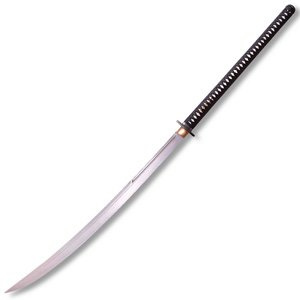A legendary weapon indeed, samurai swords have been part of Japanese history and have been a great influence on the arts, entertainment and literature. Nowadays, when we think of samurai, we imagine invincible warriors wielding sharp swords, slicing through ninjas, catching and twirling these blades with their bare hands without so much as blinking. But really, how much of what we see on movies is actually true? Here are some fascinating facts and myths about the legendary samurai swords.

Myth: A good samurai sword can slice a silk scarf dropped on the blade.
Fact: The katana, or any type of sword is designed to slice objects as the blade is pulled across the target. It is very unlikely that a silk scarf will be cut if the cloth is simply dropped on the blade. Exhibitions that involve walking on swords are possible when you think about it. Because as long as there’s no sliding action, the blade rarely cuts. But if a scarf or a piece of cloth is allowed to slide across the edge, it could be cut.

Myth: A japanese sword can chop a regular sword in half or in pieces.
Fact: You probably saw how Beatrix Kiddo sliced one of the Crazy 88’s sword into pieces. But this is highly unlikely. Any steel sword can break, if it’s struck at a wrong angle, or if it’s poorly made.
Myth: It’s possible to stop a downward strike of a sword by trapping the blade between your palms.
Fact: The only fact here is, it would definitely kill you when you try it. So don’t.
Myth: Fingerprints ruin swords.
Fact: If fingerprints or any trace of contact on the blade aren’t removed for a very long time, it will cause the blade to rust.
Myth: A samurai would sometimes use two swords simultaneously during battle.
Fact: There are two-sword techniques and it’s possible that such style was used before.
Myth: Samurai often fought against ninjas in ancient Japan.
Fact: This is more myth and legend than fact.

Myth: Giant swords shown in museums that weigh more than 10 pounds were actually used in battle.
Fact: True. Some of these nodachi were carried by men on horseback during battle and some were used as ceremonial swords.

Nodachi
Myth: Samurai swords were thrown away into the ocean at the end of World War II when Japan surrendered to the US.
Fact: There were many blades destroyed after the war, and some of them may have been cast into the sea from ships, just like any other weapons at that time.
Myth: Test-cutting harms the blade of the sword.
Fact: Tameshigiri, is the testing of the sword’s cutting ability, while Suemonogiri is the testing of the swordsman’s technique, performed by swordsmen of all ranks. Cutting harms a blade in some ways–it could be by dulling it or subjecting it to bending or rusting. Test targets can definitely do harm. Hard targets can chip the blade while soft targets could bend or corrode the blade. But the greatest threat to any sword is the cutting ability of the user.
Myth: Owning a katana is illegal for ordinary Japanese citizen
Fact: Local Japanese citizens have the right to own Japanese-made blades that are registered with the Nihon Token Kai (Japanese Sword Association). However, the sword should be have historic or cultural significance. There is a certificate of authenticity and ownership as well as permits needed to be able to own one legally. Unlicensed swords are confiscated and those who possess one without the necessary papers may face charges and penalties.

Photos by jadael, _Dadita_, Damian Scott, rye52782 and אומנויות לחימה, אקבן – AKBAN via Flickr Creative Commons


Comments
This is the best information about how to play with most dangerous swords. We will keep these things in mind while playing with these swords. These swords are very dangerous and should be used carefully. Only professionals should use these swords.
What about if they are not Japanese Katanas. I own a Hanwei dark sentinel Sword hand made and a Heian period design straight blade sword hand made as well from Dragon Forge in mainland China. All I need to know is if I am in my personal yard on my private property can the police just roll in and violate my rights as a resident alien even if no one calls the police If I am outside practicing my sword forms?